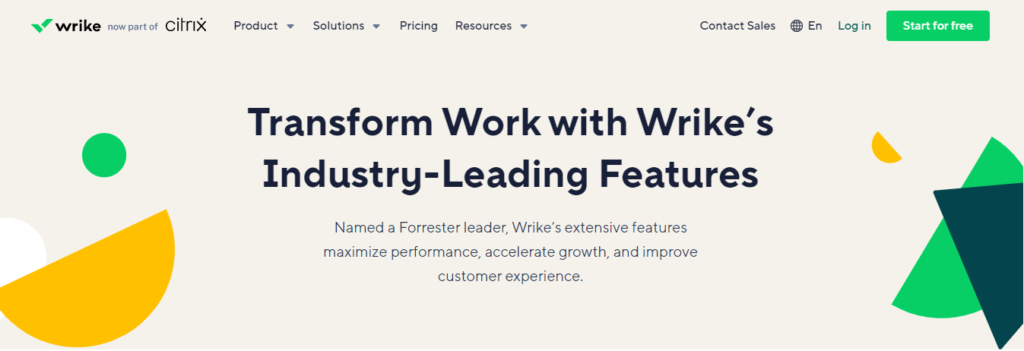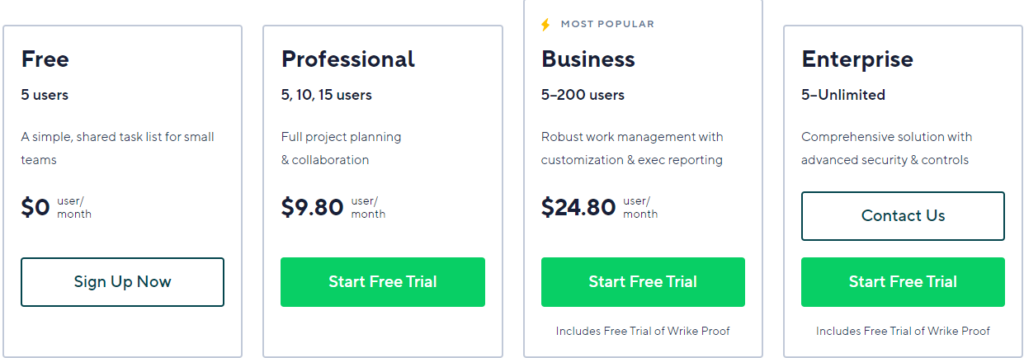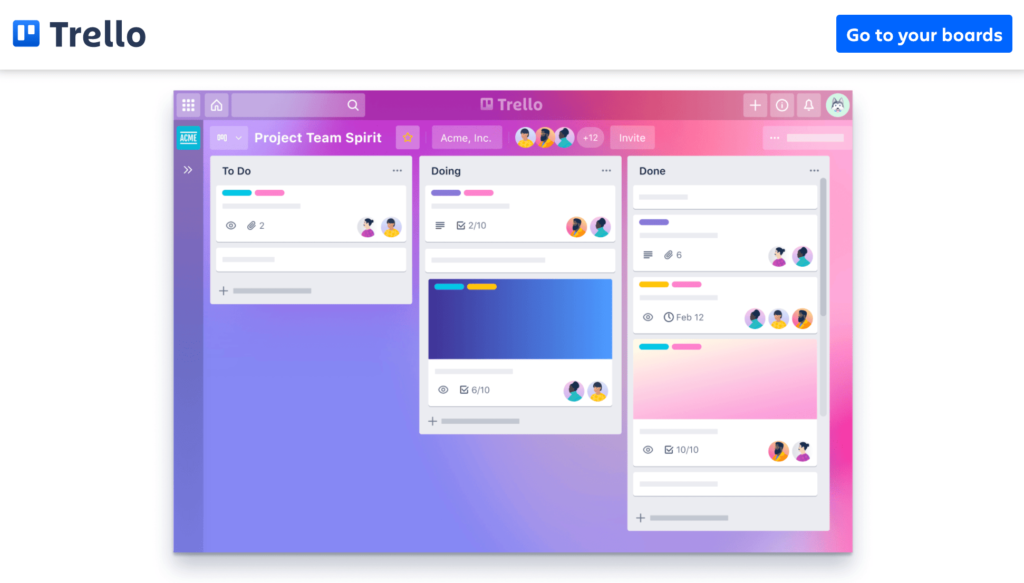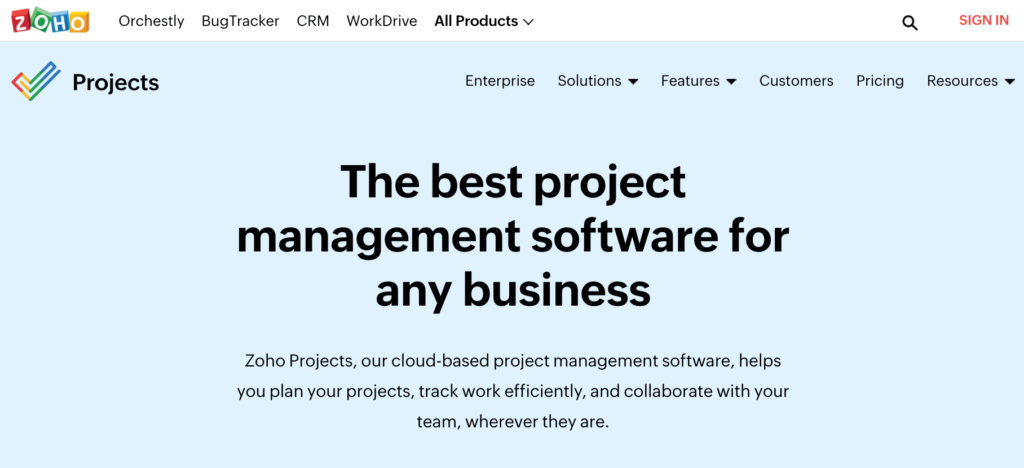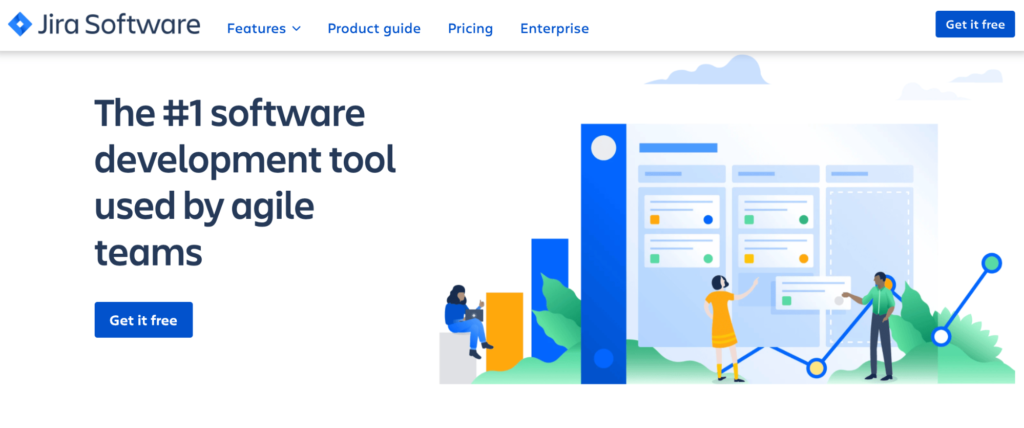Have you ever wondered how tech giants manage to develop and update numerous products in such a short time? The answer lies in Agile. Agile project management focuses on speed, frequent releases, and feedback loops. According to Vitality Chicago, Agile’s failure rate is a meager 8% compared to Waterfall’s 22%. It’s no wonder 71% of companies use Agile approaches, and the interest is stronger than ever.
What is Agile Project Management?
Agile is an iterative approach to project management that prioritizes collaboration, feedback, and response to changes during the project lifecycle. Here, the project is broken down into short developmental cycles or stages called iterations. During each iteration, team members collaborate with stakeholders to adjust and improve processes and the final deliverable.
Agile project management traces its roots back to software development in the 1990s. Software teams, in particular, found traditional project management methods (such as Waterfall) to be too rigid. Software development requires autonomy, adaptability, and flexibility as opposed to more traditional projects (such as manufacturing) with fixed processes and predictable outcomes.
The Agile methodology has since found widespread use outside of software development and can be applied to virtually any project with constantly changing objectives.
4 Tools to Improve Agile Project Management Implementation
The Agile philosophy and principles aside, there are practical tools that you need to implement this methodology successfully. The most critical tools include:
1. Project Management Software
If ever there was a cheat-sheet for implementing Agile project management, you can find it in a software suite. There are project management tools dedicated explicitly to agile software development teams. However, this software tends to target DevOps since Agile is inherently a software development approach.
Instead, we recommend Wrike, a more flexible project management tool adaptable to various industries. Wrike’s features cover all the essential Agile principles and include:
- Customizable dashboards, request forms, and workflows to suit any team
- Enhanced collaboration, including files, reports, tasks, and calendar sharing
- Kanban boards, interactive Gnatt charts, and purpose-built templates
- Task automation
- Media integrations
- Time tracking
- Advanced analytics
- And more
Wrike also offers free trials for all its plans. Good project management software comes integrated with the essential tools you need to manage your Agile project from start to finish. Check out our Best Project Management Software post here for the complete picture of your best project management software currently on the market.
2. Agile Project Plan and Workflow Templates
As with all project management methodologies, you’ll need to develop a project plan. The first step is to define a project vision, including documenting the known business and technical requirements. This stage also includes gathering and documenting estimates for scope, time, and budget. Crucially, project planning also involves creating your project team.
Unlike traditional project management methodologies, Agile planning primarily focuses on the first sprint. An agile template helps make the planning easier by using a checklist-style approach not to miss anything. The project plan template also helps visualize the plan and is easily shareable with team members.

The workflow template is different from the project plan template. Depending on the framework you choose (Scrum is the most common for Agile project management), the appropriate template helps to hasten this process. Again, templates are crucial for visualizing your workflow. Also, the workflow for Agile PM focuses on the initial sprint or iteration.

Good PM software comes loaded with these templates, so it’s only a matter of filling out the details. Wrike, for example, easily handles the project planning and workflow stages, so you don’t need additional templates.
3. Work in Progress (WIP) Limit
The Agile PM methodology places a hard cap on the number of tasks that team members can complete at any one time. To stay true to this principle, a WIP tool helps visualize the pieces of work in progress and make the necessary adjustments. For example, Agile recommends a limit of three ongoing tasks at a time. This approach helps to avoid context switching and multitasking.
A Kanban board is a simple yet effective WIP tool. The board uses cards and columns to break down tasks into “To Do,” “In Progress,” and “Complete” segments of a workflow.

Most project management software, including Wrike, already comes with integrated Kanban boards. If you want a Kanban-style standalone tool, we recommend Trello.
4. Burndown Charts
A burndown chart helps to visualize the team’s progress from the end user’s perspective. Simply put, this chart reveals how much work is left to do and the amount of time to do it in. A burndown chart includes the following crucial data points:
- Total work in each iteration
- Remaining tasks
- Estimated team speed
- Actual team speed
There are two main types of burndown charts. The first is the Sprint Burndown, which shows the work remaining in the sprint or iteration. Secondly, the Product Burndown showing the performance for the entire project.
Wrike, like most other project management software adapted to Agile, includes burndown charts.
The Basics of Agile Project Management
There are four distinct values laid out in the Agile Manifesto. These values form the foundation of Agile project management.
Individuals and Interactions over Processes and Tools
Focusing on processes and tools makes it difficult to accommodate new thinking, new ideas, and unique requirements. This Agile value focuses on team members’ contribution to the project rather than processes and tools driving the project. This approach helps develop an agile team that can quickly adapt to internal and external changes rather than bogged down by bureaucracy and fixed procedures and tools.
In any case, team member’s energy, problem-solving abilities, and innovation are more straightforward to tap into than complex processes and tools. The latter requires plenty of time and money investment to maintain, which can divert focus from the crucial tasks at hand. Central to this human-centric value is communication, teamwork, innovation, and taking personal ownership of the project.
Working Software over Comprehensive Documentation
Traditional project management methodologies are heavy on documentation. From interface design documents, technical prospectus, technical requirements, documentation plans, and the subsequent approvals, it’s no wonder delays in the development process are inevitable.
While Agile doesn’t completely throw out documentation, it streamlines the process to the bare minimum to get the work done.
In Agile, documentation is replaced with User Story. The user story describes the software (or product) features from an end-user perspective. User stories use simple, informal, and natural language and are a simplified version of traditional documentation.

In short, a user story answers the “who,” “what,” and “why” of the products’ requirements to determine the steps in the project lifecycle.
Customer Collaboration over Contract Negotiation
Traditional project management methodologies insist on detailed contracts before and after the project. Frequently, there is a mismatch in the contract terms, the final product, and the customer’s expectations. To bypass this challenge, Agile project management focuses on customer collaboration throughout the project lifecycle.
This approach ensures that the final product meets the customer’s expectations while minimizing wasted time and resources.
Responding to Change over Following a Plan
Agile project management is peculiar for its minimalistic approach to project planning. Traditional PM methodologies outline elaborate plans at the beginning of the project that team members must follow to the tee. This strategy can get in the way of customer satisfaction if the client requests new features or changes the project scope.
Agile proposes an evaluation after each project stage or sprint. Any new feedback or discoveries are then implemented in the next stage. This system allows for flexibility and adaptability and accommodates shifting priorities throughout the project lifecycle.
7 Tricks for Implementing Agile Project Management
Here are seven things you can do to implement the Agile approach to your project management methodology.
1. Choose a Suitable Agile Approach
While there are fixed principles that define Agile project management, Agile is actually an umbrella term encompassing several approaches. Ultimately, all Agile practices have two things in common. They are iterative and incremental processes. The Agile approach you choose largely depends on the project at hand. The specific framework may also change from one project to the next. Examples of Agile frameworks include:
Scrum
Scrum framework is almost synonymous with Agile and is arguably the most popular framework. Scrum breaks down the project into sections called sprints that are typically two or four weeks long. At the beginning of each sprint, team members prioritize a list of requirements to complete during the specific sprint. The project unfolds one sprint at a time.
Scrum teams consist of a Scrum Master and a Product Owner. The scrum master is the team’s leader and is primarily responsible for ensuring that the team sticks to Agile principles. The Product Owner is the subject matter expert for the project, responsible for ensuring that the project lives up to the stakeholder’s expectations.
The rest of the scrum team comprises cross-disciplinary experts such as designers, architects, engineers, and testers.
Kanban
The Kanban framework focuses on visualizing the workflow. This way, teams can break down the project into small pieces. Kanban is particularly effective at identifying bottlenecks and reducing waste. Also, this framework lays out explicit process policies and well-defined project limits to maximize efficiency and productivity.

Kanban encourages teams to focus on fewer work items at a time. This strategy helps keep the work items from getting blocked, stuck, or delayed during the different development stages.
Extreme Programming (XP)
Extreme programming is specifically geared toward software development projects. This framework is similar to scrum in that it breaks down the project into sprints. However, XP lays out explicit processes specific to software development.
Also, Extreme Programming is more focused on the quality of software practitioner’s habits, such as adhering to coding standards and frequently checking code against the master code.
Other Agile Frameworks
Scrum, Kanban, and Extreme Programming (XP) are the most common Agile frameworks. Additional frameworks include:
- Feature-driven Development (FFD)
- Dynamic Systems Development Method (DSDM)
- Lean
- Crystal
- Bimodal
- Hybrid
2. Set the Scope for the Project
Project planning entails defining the project scope. The best time to do this is during the initial planning meeting. In Agile, you’ll be loosely defining the project’s end goal and how to achieve it. Since Agile projects are inherently flexible and rely heavily on feedback, the work scope should reflect this reality.
An elevator pitch works well for setting the scope for your project.
3. Train Your Team Members
While simple on the surface, Agile can be complicated to implement. For this reason, it’s a good idea to train the critical team members on Agile principles. The Agile Manifesto is a great launching pad, but your team may need more comprehensive training.
If you’re implementing Agile for the first time, it’s a good idea to start with a small non-crucial project. This strategy gives your team a low-pressure scenario to practice its Agile knowledge and expertise. Similarly, you can evaluate these small projects and determine areas of improvement before moving on to larger and more critical projects.
4. Implement Daily Standups
The daily standup is Agile speak for daily meetings. These meetings are crucial given the fast-paced nature of Agile project management. These meetings are typically 10-15 minutes and discuss three crucial aspects:
- What did we complete yesterday?
- What are we working on today?
- Are there any obstacles in the way?
Agile being a team-centric methodology, these daily meetings ensure that your team can identify and resolve problems as soon as they occur.
5. Stay Focused on Flow Efficiency
Traditional project management methodologies focus on optimum capacity utilization. However, in Agile, the main focus should be flow. By following the mantra “manage the work, not the workers,” you can create an environment where team members lean towards value-adding activities, collaboration, and knowledge sharing.
To this end, it’s helpful to identify specific value-adding activities and those activities that don’t add value. The former goes on the Kanban board, where it’s then easy to map the workflow from start to finish.
Swarming is also a valuable strategy for optimizing flow. When a team member finishes their assigned work items, they help other members with their tasks rather than starting new work. Swarming helps to foster teamwork and collaboration and is an effective tool for removing bottlenecks from the workflow.
6. Conduct Sprint Reviews
A large chunk of incremental improvement comes from sprint reviews. Ideally, you should have a functional piece of software (or product) shipped at the end of each sprint cycle. This is an excellent opportunity to review what the team did right and what could be improved during the next sprint.
Include everyone working on the project and the critical stakeholders in the sprint review. An effective sprint review should take an hour or two. This isn’t the time for lengthy PowerPoint presentations and feature dissertations. Instead, focus on the practical aspects of the sprint and how these can be improved.
7. Manage the Queue Size
Traditional project management places great emphasis on timelines. While this take is critical in delivering products on time, it can put undue pressure on the team. Agile project management takes a slightly different approach in this regard. Rather than managing deadlines, Agile focuses more on managing the queue size.
Managing the queue size naturally increases efficiency and reduces the cycle time. Visualizing the work queue with a Kanban board helps draw attention to areas where tasks tend to pile up. Next, you can take action steps to remove the bottlenecks, such as reducing the work items’ batch size.


